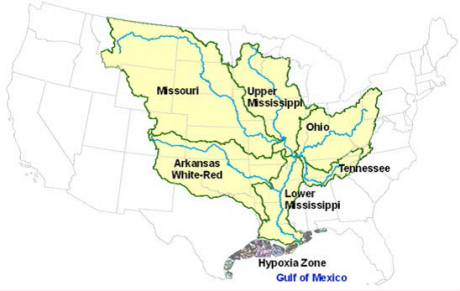
Argonne is developing applications of watershed modeling to quantify the relationships between bioenergy production and water use, water quality and water resource availability. The production of biofuel from both conventional feedstock and cellulosic feedstock will potentially increase in the near future, and a significant portion of the cellulosic feedstock is expected to come from this region. This work also identifies region-specific scenarios to increase water-use efficiency and reduce potential negative impacts.
This project addresses water quality in tributary basins of the Mississippi River Basin -- the Upper Mississippi River Basin, Ohio River Basin, and Missouri River Basin by developing watershed models using SWAT (Soil Water Analysis Tool). Researchers examined the impacts of increased biofuel feedstock production on regional water resource and water quality. The work resulted in future scenarios of biofuel feedstock production to assess the potential changes of water quality (nitrogen, phosphorus, sediment) and hydrology (total flow, evapotranspiration [ET], and runoff) under various future biofuel-production scenarios, with the three major types of feedstock (corn grain, corn stover, and switchgrass) associated with an increase in biofuel production. Impacts of climate change on watersheds in the tributary basins have also been assessed.